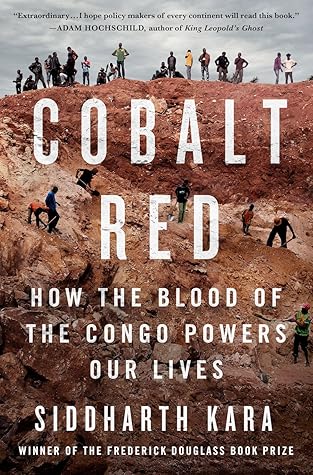More on this book
Community
Kindle Notes & Highlights
Read between
February 23 - March 24, 2024
Our daily lives are powered by a human and environmental catastrophe in the Congo.
At no point in their history have the Congolese people benefited in any meaningful way from the monetization of their country’s resources. Rather, they have often served as a slave labor force for the extraction of those resources at minimum cost and maximum suffering.
As of 2022, there is no such thing as a clean supply chain of cobalt from the Congo. All cobalt sourced from the DRC is tainted by various degrees of abuse, including slavery, child labor, forced labor, debt bondage, human trafficking, hazardous and toxic working conditions, pathetic wages, injury and death, and incalculable environmental harm.
People ask, why are the children working in the mines? My grandchildren are there now. Would you rather they starve? Many of the children lost their parents. Sometimes a woman will marry again and the man chases the children out of the house. What are those children supposed to do? They can only survive by digging.
Before I left, Josué grabbed my arm and looked at me with the face of a man on fire. “Now you understand how people like us work?” “I believe so.” “Tell me.” “You work in horrible conditions and—” “No! We work in our graves.”
Profits up the chain were as great as ever as cobalt prices increased throughout 2020 and 2021, but incomes for artisanal miners reached rock bottom. Families could no longer afford food, clothing, and housing. Thousands of children had to leave school to dig for cobalt to help their families survive.
We would not send the children of Cupertino to scrounge for cobalt in toxic pits, so why is it permissible to send the children of the Congo?


